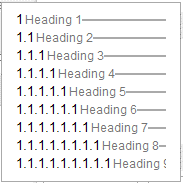
Technical Report Writing Guidelines
|
|
(Amended and updated on June 14, 2018)
|
Technical report writing can follow many different formats depending on the
topic being covered. For the purposes of the Industry Project course in the
Civil Engineering program, the following report format is the one you will be
required to follow. Client reports missing any of these sections will be
downgraded accordingly during evaluation.

4 Drainage
4.1 Existing Facilities
4.1.1 As Built Information
4.1.2 Site Visit
4.2 Design Flows
4.2.1 Legal Requirements
4.2.2 Method of Analysis
4.3 Required Upgrading
4.3.1 Facilities Required for New Development
4.3.2 Upgrading Required for Existing Facilities
Body of ReportFollowing is a general layout for the body of a technical report. Depending on the nature of the work, details will vary: some elements may not apply and some may need expanding or rearranging. Nevertheless, the general format should be adhered to.Present tables and figures in the body of the report following the first reference to them(NEVER ASSUME THAT THE FIGURE OR TABLE IS SELF-EXPLANATORY--DISCUSS IT IN THE TEXT!!!) |
|
| If your project requires additional printed material such as guidebooks, user
manuals, or software training materials, be sure to include copies of each of
these items with each of the four (4) copies of your Client Report that you
hand in.
Note: It is not permissible to hire for payment any person to assist you with review, writing, or editing of any component of the report if it is to be represented as your work. Any such transgression can result in a mark of zero for this report. If you have received unpaid editorial assistance in the review, writing, or editing of your work from anyone outside of the Civil program or your Communications course, include a sentence in your transmittal letter acknowledging their assistance and clearly defining the work that you were assisted with. |